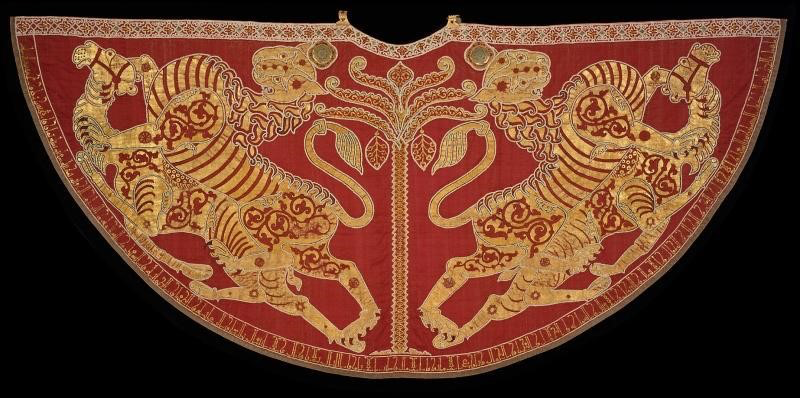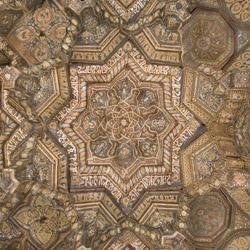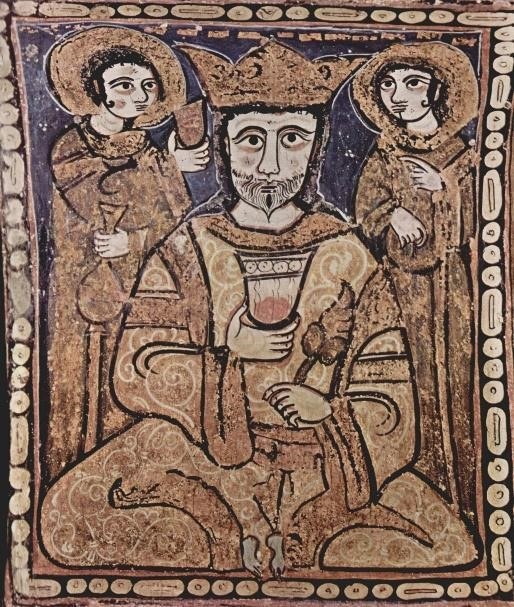A medieval multicultural court
How were Sicily's various artistic traditions preserved by Roger II's tolerant cultural policy?
Multiculturalism and religious pluralism are much discussed phenomena in today’s society. Nonetheless, if we look back into the past, it is easy to find various historical examples of heterogeneous populations worldwide. Notably, the society of twelfth-century Sicily and Southern Italy had been flourishing in the era of the Norman Kingdom (1130 -1198), especially under its first crowned king, Roger II (1130-1154). The Norman conquest of the formerly Muslim territories was followed by the incorporation of Islamic culture with the Western Christian and Byzantine civilisations. Roger’s royal court became a diverse intellectual hub of numerous traditions. I would like to show you some examples of treasures which demonstrate the cultural interactions between Christians and Muslims. How can we explain the origins of these treasures and their significance?
Our first sample is a red silk mantle, richly decorated with semi-precious stones, pearls and glass jewels, that gives the impression of an Islamic caftan. Although the costume has a typically Western semicircular shape, it has several Arab-inspired characteristics such as the stylised palm tree in the middle, surrounded symmetrically by two triumphant lions who defeat two kneeling camels.

Image 1. Mantle of Roger II, Kunsthistorisches Museum - (Vienna: Textile Research Centre)
What’s more, there is an inscription running through the edge of the garment, written entirely in ornate Kufic calligraphy, an ancient form of Arabic writings. It lists several motifs of Roger’s reign:
Here is what was created in the princely treasury, filled with luck, illustration, majesty, perfection, longanimity, superiority, welcome, prosperity, liberality, shine, pride, beauty, the achievement of desires and hopes, the pleasure of days and nights, without cease or change, with glory, devotion, preservation, protection, chance, salvation, victory and capability, in the capital of Sicily...
So what this luxuriously embroidered and ornamented ceremonial cape was meant to represent?
William Tronzo has attributed the combination of these elements to the coexistence and cooperation of oriental and occidental artistic features in Norman Sicily. This idea drives us to consider the mantle’s symbolic significance of displaying the role and responsibility of Roger’s court as the melting pot of multiple cultures. Interestingly, the victory of the lion over the camel, a typically Middle Eastern animal, on both halves of the garment might express some degree of superiority of the Normans. However, since the lion was the emblem of Norman rulers, we can regard it as the illustration of Roger’s personal power and leadership, rather than as the subjugation of the Muslims. Clare Vernon claimed that the various elements pay tribute to the socially diverse population of the territory. Respecting the wide range of cultures was also a necessity of a peaceful governance, not only a generous gesture. Thus, this object outgrew its basic function and became the representation of the continuity and legitimacy of the new leader.
You can also see this inclusive approach in the marvelous manifestion of Arab inspiration in the interior design and decoration of Roger’s construction project. The Cappella Palatina, the royal chapel in the Palazzo Reale in Palermo, served as the ceremonial centre of the court and symbolically portrayed the divine origin of the king’s rule. Certain parts of the chapel were created by Muslim craftsmen who had received a high-level training in the Fatimid artistic tradition, techniques and developments. Roger invited them to invest their knowledge in the revival of the sublimity of his new kingdom by reforming the royal architecture. The Cappella was constructed in two different styles - the eastern part, the sanctuary was designed as a Byzantine church, while the nave looks like a royal reception hall and carries Arab artistic patterns. We can see these on the internal walls covered by tapestry, arches and colonnade, as well as in the impressively decorated vaulting which is called muqarnas and was common in Islamic architecture. If we take a look at the wooden ceiling, we can notice several animals, plants, geometric formations and scenes of court life that all testify the handwork of Muslim experts. The use of numerous ornamental arabesques (Arab decoration style of intertwined flowing lines) intended to praise the wealth and beauty of the Paradise.

Image 2. Muqarnas ceiling, Cappella Palatina, Palermo - (Wikimedia Commons, 2011)
A remarkable example of Roger’s identification as a Muslim sovereign is one section of the ceiling where he was depicted in Islamic-inspired iconography, seated cross-legged on a dais, a raised platform, wearing a caftan just like an Arab caliph:

Image 3. Roger II depicted in Arab style – Cappella Palatina, Palermo - (Wikimedia Commons, 2002)
Now, why this variety in artistic styles? According to Karen Britt, the high degree of Islamic influence proves an „artistic cosmopolitanism” which was encouraged centrally.
So, Roger II’s successfully recognised the benefits of preserving Islamic heritage and employing Muslim experts to balance multiculturalism in favour of a prosperous society. The carefully designed and implemented stylistic choices refer to the appreciation of all his subjects. Roger II’s tolerant and integrative cultural policy inspired the ruling style of his Norman successors as well. You may wonder how many treasures and traditions could have survived if more later rulers had followed his footsteps – in Sicily and worldwide.
References and further reading
Britt, Karen C., ’Roger II of Sicily: Rex, Basileus, and Khalif? Identity, Politics, and Propaganda in the Capella Palatina’, Mediterranean Studies, vol. 16 (2007), pp. 21-45.
Fatimid art: https://en.wikipedia.org/wiki/Fatimid_art
History of the Norman conquest of southern Italy and the Kingdom of Sicily: https://en.wikipedia.org/wiki/Norman_conquest_of_southern_Italy
Qantara: Mediterranean Heritage, https://www.qantara-med.org/public/show_document.php?do_id=1159&lang=en.
Tronzo, William, The cultures of his kingdom: Roger II and the Capella Palatina in Palermo (Princeton, N.J.; Chichester: Princeton University Press, 1997).
Vernon, Clare, ’Dressing for Succession in Norman Italy: The Mantle of King Roger II’, Al-Masāq Journal of the Medieval Mediterranean Latest Articles, vol. 31, no. 1 (2018), pp. 1-16.
© Elvira Tamus and Leiden Arts in Society Blog, 2020. Unauthorised use and/or duplication of this material without express and written permission from this site’s author and/or owner is strictly prohibited. Excerpts and links may be used, provided that full and clear credit is given to Elvira Tamus and Leiden Arts in Society Blog with appropriate and specific direction to the original content.



0 Comments